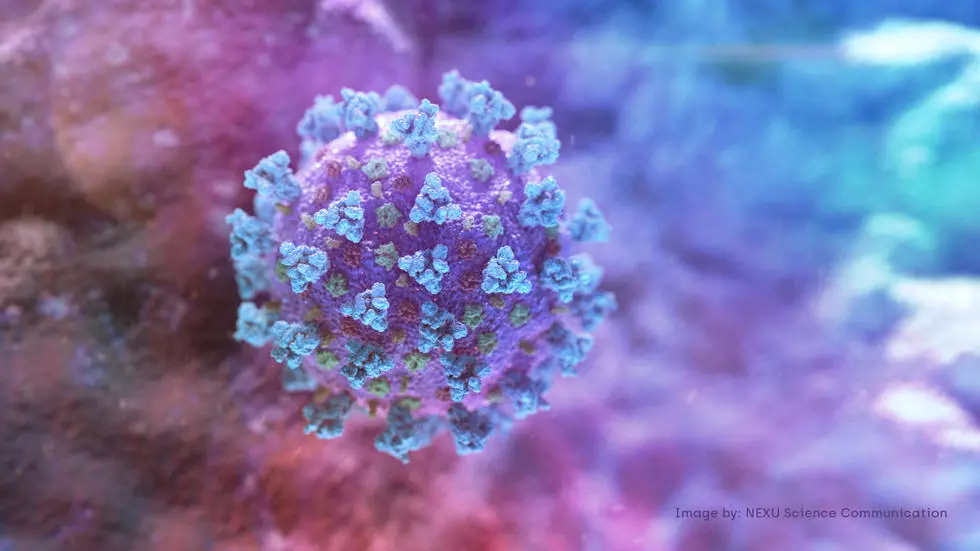
分类: 未分类
-
新一批农业转基因生物安全证书批准清单公布:拜耳、先正达、巴斯夫、大北农、华南农大
2021年2月4日,农业农村部科技教育司正式公布2020年转基因生物安全证书批准清单。
进口清单,包括拜耳、先正达、巴斯夫公司共5个品种,其中2个抗虫耐除草剂玉米、1个抗虫棉花、2个耐除草剂棉花。
生产应用清单,农业种植方面,第二批包括大北农的转基因玉米、转基因大豆品种。
大北农玉米性状产品DBN9501和大豆性状产品DBN9004(原名为“DBN-09004-6”)完成公示,DBN9501正式获得北方春玉米区生产应用的安全证书(农基安证字(2020)第223号),DBN9004正式获得北方春大豆区生产应用的安全证书(农基安证字(2020)第224号)。早前,DBN9004(FARMAXGGT)大豆2019年2月27日获得阿根廷政府的种植许可,2020年6月11日获得中国进口安全证书。DBN9004具备草甘膦和草铵膦两种除草剂耐受性。
生产应用清单,农业种植方面,第一批包括大北农的2个转基因玉米品种和华南农业大学的1个转基因木瓜品种。
大北农的耐除草剂玉米DBN9858 获得黄淮海夏玉米区、南方玉米区、西南玉米区、西北玉米区生产应用的安全证书;抗虫耐除草剂玉米DBN9936获得黄淮海夏玉米区、南方玉米区、西南玉米区、西北玉米区生产应用的安全证书。
华南农业大学的转番木瓜环斑病毒复制酶基因的番木瓜华农 1 号获得华南地区生产应用的安全证书。
在2020年7月15日农业农村部科技教育司公布的2020年转基因生物安全证书批准清单中,大北农的耐除草剂玉米DBN9858 获得北方春玉米区生产应用的安全证书,耐除草剂大豆中黄6106 获得黄淮海夏大豆区生产应用的安全证书。
-
新冠疫苗:从实验室试管到你我的胳臂
新冠疫情当前,全球掀起前所未见的疫苗研发热潮,誓在保护世界上最脆弱无助的人们免遭新冠荼毒。
让我们来看看,疫苗是怎样从实验室的试管出发,以破纪录的速度到达你我的胳臂。
疫苗在实验室诞生
这种新型新冠病毒的基因序列2020年1月公布之后,各国科学家们就开始研发新冠疫苗。
疫苗研发各阶段的工作在世界各地同时展开,通常需要10年的工作被压缩到不超过12个月的时间完成;全球科学团队合作之密切前所未见。
不少团队曾经研究过近年来导致非典(SARS)和中东呼吸综合症(MERS)疫情的冠状病毒,所以领先一步。
科学家们对病毒展开细致入微的研究,力求识别一种抗原,即能够触发人体免疫反应的极微小的那一部分。
大部分有效的疫苗都包含了极微小的、无害的病毒碎片,或者在我们体内生成这种碎片的指令。
科学家在实验室用电脑模型和细胞测试这些抗原,同时跟踪监测副作用。
疫苗开始人体试验
实验室的研发和试验结束后,就开始疫苗的人体试验,给世界各地的志愿者注射疫苗,检测安全性和有效性,并计算剂量。
这个阶段的试验和检测通常需要10年,但为了加快速度,新冠疫苗研发的不同阶段在全球同时展开。
试验成功后,结果呈递负责医药安全的监管部门审批。
这些部门的科学家们对不同疫苗的安全性、质量和有效性进行严格评审,最后决定是否对它们开绿灯。
英国监管机构为了加快审批速度,采用了一种叫「滚动评审」的系统。一旦正在进行的试验取得的数据足够多,就立刻开始评估,而不是等到试验全部结束后才开始。
疫苗在药厂批量生产
一般来说,疫苗得到当局批准后,药厂开始批量生产。
不过,新冠疫苗量产产能的建立较早,还在研发阶段就开始了,因为有大量资金为后盾。
这意味着医药公司时刻准备着,一旦安全有效的疫苗获准使用,就可以迅速启动疫苗发放配送。
疫苗制作过程包括批量生产有效成分,然后将它跟其他成分混合,比如稳定剂。
另外,还经常会用到免疫佐剂,用来增强免疫反应。
疫苗批量生产出来,通过质量检测,然后在消毒车间分装到小瓶里,然后付运。
疫苗冷链运输
出了药厂大门,疫苗便进入「冷链运输」环节;运输途中必须确保储存疫苗所需的恒定低温。
绝大多数传统型疫苗需要在摄氏2-8度环境下保存,但有的新冠疫苗需要极低的保存温度。
比如辉瑞-BioNTech疫苗就需要在摄氏零下70度的低温下储存。
但英国研发的牛津-阿斯利康疫苗可以在普通冰箱里储存,物流方面没有挑战,可以利用现成的药物运输冷链。
确保最需要疫苗的人— 而不仅仅是出得起这笔钱的人— 都能够接种,是结束全球疫情的关键。
发达国家政府下了巨额疫苗订单采购多种疫苗,但世界卫生组织(WHO)也制定了一个叫做Covax的计划,目的是保证中低收入国家的疫苗供应。
疫苗从集散中枢向各地接种中心配送
疫苗运到目标国之后,先在安全地点抽查质量,检验合格后向各地分发。
辉瑞疫苗需要特殊冰冻设备,部分国家为了确保安全,专门为疫苗建了冰冻场,即把一批深度冷冻设备集中在一个地方。
检测合格后,疫苗被分批装上冷藏车运往医院、药房、诊所和其他疫苗接种站点。
疫苗也可能在区域集散中心的仓库中转,然后运往基层诊所、站点。
疫苗中心为民众接种
疫苗接种站点分批获得疫苗后需要妥善储存。
冷冻的疫苗在注射前需要化冻,有些还需要稀释。
疫苗用注射器注入上臂,进入人体,开始工作。
疫苗进入人体后开始训练免疫系统抗击冠状病毒,防止我们被新冠肺炎击倒。
对接种疫苗的人群跟踪观察,经过一段时间,我们可以知道疫苗的保护作用能够持续多久。
-
疫苗的原理
其实,大部分疫苗都需要后续增强剂才能完全起作用。比如麻腮风三联疫苗(MMR),刚出生时第一次接种。研究发现只打过一针的人当中有40%对三种病毒没有完全免疫,而打过第二针的人里这个比例只有4%。
伦敦帝国理工学院免疫学教授丹尼·奥特曼(Danny Altmann) 解释说,后续增强剂可以激发接种者自身免疫机能进入一种新的微调模式。
身体免疫系统初次跟疫苗相遇时,会激活两种重要的白血球(白细胞),首先是B浆细胞,主要功能是产生抗体。但它们寿命不长,初次接种疫苗后开始几周身体里有大量抗体,如果不注射第二剂疫苗的话,抗体数量会锐减。
另一种是T细胞,又叫T淋巴细胞,成熟后分化成不同的效应亚型,能识别和杀死不同的病原。其中一种叫记忆T细胞,如果没有碰到格杀对象(病毒),在体内可以存活几十年。这意味着有些疫苗可以终身免疫。
关键在于,这种T细胞只有在注射了第二针疫苗之后才会大量产生。
所以,通过注射疫苗后续增强剂,让身体第二次接触抗原,即病原体上触发免疫系统的分子,从而激活第二阶段的免疫反应。
奥特曼解释说,注射增强剂之后,体内的记忆T细胞数量增多,有时记忆B细胞的数量也会增加,而它们产生的抗体质量会更高。
注射疫苗增强剂后,先前产生而且还活着B细胞再次遇到病原,会急速分裂,产生大量来势汹汹的后裔,然后免疫系统里巡逻的抗体数量出现第二次高峰。
第二剂疫苗还会做一件事,启动“B细胞成熟”过程,具体包括在尚不成熟的B细胞中挑选出受体跟特定病原捆绑最佳的那些。这个筛选过程在产生白细胞的骨髓里进行。这个过程结束后,作为“精锐力量”的B细胞进入脾脏,在那里完成发育。
这意味着增强剂疫苗不但会使B细胞数量增多,产生的抗体杀敌也更精准。
与此同时,前面已经提到,后续疫苗进入体内后记忆T细胞的分裂速度迅速加快。有迹象表明一些已经注射新冠疫苗的人体内的记忆T细胞可能以前“见过”它们的同类,即以前爆发过流行的冠状病毒,记住了,所以这次很容易就认出新冠病毒。
-
Israeli scientists say they’ve found ‘Achilles’ heel’ of cancer cells. Breakthrough study unveils vulnerability of malignant cells with high degree of chromosomal instability and could lead to new treatments.
A team of researchers led by scientists at Tel Aviv University say they may have stumbled upon the “Achilles’ heel” of cancer cells, which could in the future lead to the development of an entirely new array of cancer drugs and treatments.
Dr. Uri Ben-David of the Sackler Faculty of Medicine at Tel Aviv University, who led the research, told The Media Line that scientists have known for well over a century that malignant cells have an abnormal number of chromosomes. Humans have 46 chromosomes (two sets of 23) but in cancer this number changes because, during cell division, chromosome segregation takes place that can lead to a phenomenon called aneuploidy.
Aneuploidy, the presence of an abnormal number of chromosomes in a cell, not only causes common genetic disorders but is also a hallmark of cancer cells. Not all cancers exhibit aneuploidy, but roughly 90% of solid tumors and 75% of blood cancers do, to a certain degree.
According to Ben-David, the findings open up an entirely new avenue for medical research.
“For decades, we’ve been trying to understand why [aneuploidy] happens in cancer and how it contributes to tumor formation and progression,” Ben-David said. More importantly, he said, scientists have been trying to see “if we can take advantage of this quite unique difference between cancer cells and normal cells in order to selectively kill the cancer cells.”
The study, which was published in the scientific journal Nature and whose findings were released Wednesday, was conducted in Ben-David’s laboratory at Tel Aviv University in collaboration with six laboratories in four other countries – the United States, Germany, the Netherlands and Italy.
“The overall vision here is that by understanding how aneuploid cells are different from normal cells, and detecting the Achilles’ heel of aneuploid cells, this could be a very attractive way to selectively kill cancer cells,” Ben-David said.
In the study, researchers took about 1,000 cancer cell cultures from patients and looked at them in a lab using advanced bioinformatic methods in order to quantify their degree of aneuploidy, from most aneuploidy to least aneuploidy. After the cancer cells’ degree of chromosomal instability was ascertained, the scientists then examined and compared their sensitivity to thousands of drugs.
Scientists found that aneuploid cancer cells were highly sensitive to the perturbation of the mitotic checkpoint — a so-called cellular mechanism which ensures proper separation of chromosomes during cell division.
“That enabled us to identify unique vulnerabilities of the aneuploid cells that we went on and characterized in depth at the molecular and cellular level,” Ben-David said. “We found that if you inhibit the proteins of these pathways, the aneuploid cells are more sensitive to this interference than normal cells … therefore, they make for attractive targets for drug discovery and drug development.”
The research has important implications for future cancer treatments and personalized medicine. At the moment, several drugs that inhibit or delay the separation of chromosomes are in clinical trials but researchers have been unable to identify which patients would respond to them or not. Ben-David’s study suggests that aneuploidy could help scientists determine an individual’s response to these drugs.
Furthermore, honing in on these chromosomal abnormalities also could lead to the development of more effective cancer treatments in the future, since doctors could test for aneuploidy and craft a treatment accordingly.
Dr. Yael Cohen-Sharir, of Tel Aviv University’s Department of Human Molecular Genetics and Biochemistry, is the lead author of the study. Cohen-Sharir, who manages Ben-David’s lab, called the research groundbreaking.
“Aneuploidy is very, very difficult to study,” she told The Media Line. “It affects so many genes at once.”
Cohen-Sharir emphasized that the current study was carried out on cells in culture and not on actual tumors, and that further follow-up research needs to be done. The next step for researchers, she said, is to attempt to replicate the findings on mice.
As for Ben-David, he is optimistic that harnessing the unique characteristics of aneuploidy could eventually lead to the Holy Grail of cancer research: finding a way to kill malignant cells without harming healthy cells in the body.
“Killing cancer cells is very easy: You can pour bleach on them and they will die, but the hard part is to do it without killing normal cells,” he said.
Ben-David says that, as far as he knows, this is the first time that aneuploidy was systematically evaluated in human cancer cells. “This is why it’s a major breakthrough,” he said.